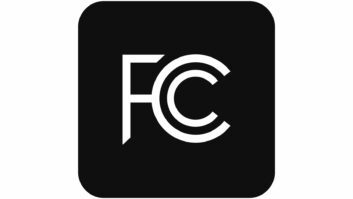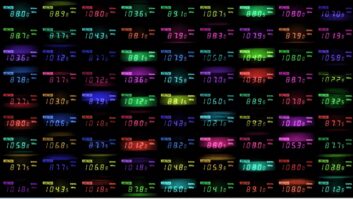Text has been updated to clarify that the August vote would issue a tentative, not final, approval to both proposals.
A request from NAB and Xperi to use a new formula to determine which stations can use the highest allowable power levels for digital FM stations is being circulated for tentative consideration by the FCC at its open meeting in August.
The commission next month is scheduled to consider an Order and Notice of Proposed Rulemaking (NPRM) seeking comment on proposed changes to the methodology used to determine maximum power levels for HD Radio FM stations.
The proposal was combined with an earlier petition from NAB, Xperi and NPR that would permanently authorize FM stations to use HD Radio with asymmetric sideband power levels − different power levels on the upper and lower digital sidebands − without the need for separate or experimental authorization. The two petitions were assigned MB Docket number 22-405.
The FCC will not give a final approval at the meeting; but a yes vote will indicate tentative approval of both changes and ask for public comment.
Chairwoman Jessica Rosenworcel said the goal is to improve digital FM signal quality and coverage while minimizing harmful interference.
The background
Xperi, the developer and licensor of HD Radio technology, and NAB say tthe existing ERP formula is too conservative. There are approximately 2,600 FM stations using HD Radio in the United States, according to Xperi.
NAB and Xperi say the new formula would allow more HD Radio stations to increase digital power over currently authorized digital ERP of -14 dBc, without the need for additional authorization.
[Related: “Xperi and NAB Seek More HD Radio Power“]
The FCC originally authorized FM stations to operate with digital ERP equal to 1 percent of analog power or -20 dBc. In 2010 it allowed stations to operate at -14 dBc but to allow certain stations that meet guidelines to increase to -10 dBc, or 10 percent of analog power.
“The proposed formula better reflects the real-world interference environment in the FM band and the appropriate level of protection that 1st-adjacent stations need from harmful interference,” the petitioners said in the joint filing.
The twin petitions combined in one proceeding appear to have nearly unanimous support among broadcasters and interested parties who have filed comments.
Beasley Media Group and Cox Media Group in their comments previously expressed support for the petitions, and iHeartMedia in reply comments told the FCC it supports the proposals’ intentions to streamline the FCC process for asymmetric sideband digital operations and to update the ERP formula. iHeart said: “The petitions propose less administratively burdensome processes and more realistic guideposts for improved IBOC operations” for broadcasters.
iHeart continued: “Interference protections and processes already in place, along with long term, real-world beneficial digital operations warrant improvements in the FCC process for IBOC service.”
However, a New Jersey broadcaster told the FCC that a proposal to grant a power increase for digital FM radio stations in the United States was not warranted and warned it could be harmful to smaller FM stations and the LPFM service.
Press Communications LLC met with the commission and argued that the proposal “would destroy well-established listening patterns to analog FM stations, particularly in areas such as New Jersey where the FM band is saturated with services.”
Press Communications, which owns five Class A FMs and one daytime AM radio station in the Garden State, cites a number of technical and competitive reasons why adopting an updated formula to determine digital FM power levels is a bad idea. Particularly vulnerable are lower power Class A broadcasters, AM operators with FM translators and LPFM stations, the group owner told the FCC. “Such stations can often serve as outlets for minorities and new entrants into the radio market.”
The proposed asymmetric operations, if eventually adopted, can leave some Class A stations vulnerable to full power operations and effectively wipe out protection on a single sideband, according to Press Communications, at least in large metropolitan areas.
Press Communications’ comments and others in the proceeding (22-405) can be reviewed online at the FCC website in the commission’s ECFS system.
The FCC meets next on July 20. The August monthly meeting is on Aug. 3 at 10:30 a.m.






